Wine and Cheese Travelling is Awesome
Join me on a wine and cheese journey or should I say a cheese and wine journey? We will be exploring the wine and cheese regions of 7 countries ranging from “New World” destinations like Napa Valley (California, USA), Barossa Valley (South Australia), Cape Winelands (Western Cape, South Africa) to Old World countries like Tuscany (Italy), Macedonia (Greece), Burgundy (France) and last, but not least, Douro Valley (Portugal). It is all about wine and cheese…and wine travelling, of course!
Barossa Valley, South Australia

We will discover great handcrafted cheese, made from a variety of different milk; goat milk, cows milk, sheep milk, and, of course, water buffalo milk. There are hundreds of types of cheese in the world. Many of them are only known in some countries or areas, but there are some known across the globe. To recognize a well-known cheese in its country of origin is a special treat. We have made a list of about 20 cheeses and will go on a cheese treasure hunt in our 7 cheese and wine countries.
Discover your favorite cheese
Mozzarella

Mozzarella may be the most popular cheese of all. It’s a southern Italian dairy product traditionally made from buffalo milk. Fresh mozzarella is generally white, usually rolled into balls of different sizes.
Parmesan
Parmesan, or Parmigiano-Reggiano, is considered to be among the top cheeses by cheese connoisseurs. It’s a hard, granular cheese with a strong, nutty, and bitter taste, and that’s the reason you should add a small quantity to your dishes.
Cheddar
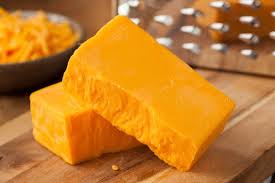
Cheddar cheese is dry and crumbly in texture, with a deep, tangy, nutty flavor. The color varies from ivory to straw to deep yellow.
Gouda
One of the most popular cheeses worldwide, Gouda is a semi-hard to hard cow’s milk cheese from the Netherlands. When Gouda is aged the cheese changes its flavor and texture. Aged Gouda has a strong flavor, with a sharp yet sweet taste at the same time.
Swiss cheese
Swiss cheese resembles Emmentaler cheese. It’s a pale yellow color, medium-hard cheese. Some types of Swiss cheese are riddled with holes known as ‘eyes’, except for the ones who don’t have ‘eyes’ and are known as ‘blind’. It is a mild, sweet cheese with a nut-like flavor.
Emmentaler

Emmental or Emmentaler is what many people think of when they hear of ‘Swiss cheese’ because they’re quite similar. This cheese is mild, a little sweet, slightly nutty, and a bit spicy at the end.
Brie
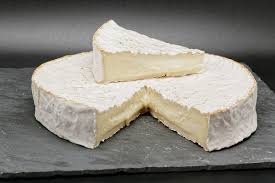
Brie is a soft cow’s milk cheese from north-eastern France, pale in color with a slight grayish tinge under a rind of white mold. This cheese has a nutty, fruity, grassy, and even mushroom-like flavor, similar to Camembert. Some people find it unpleasantly acidic, others think it’s pleasant, buttery, and a bit tangy.
Camembert
Brie and Camembert look and taste like, and they’re often served in similar ways. Yet there are subtle differences: Camembert has a more intense flavor.
Gruyère
Gruyère is a hard cheese, yellow in color, sweet but slightly salty, with a flavor that varies depending on its age. Gruyère cheese is generally known as one of the finest cheeses for baking because it’s great for melting.
Feta
Feta is a Greek cheese made with sheep and goat milk. It’s a white brined cheese, salty, tangy, and moist, with a texture that can go from crumbly to moderately creamy.
Monterey Jack
Monterey Jack is one of the few all-American kinds of cheese. It’s a pale yellow semi-hard cheese made with cow’s milk. It has a mild buttery flavor with a bit of tang, and it’s good for melting.
Provolone
Provolone is Italian semi-hard cheese. Its taste varies depending on its age; from sharp or spicy to sweet with a very mild taste. Some versions of provolone are smoked.
Edam
Edam is a Dutch semi-hard cheese, traditionally sold in spheres with a pale-yellow interior and a coat of red paraffin wax. It has a very mild flavor, slightly salty or nutty, and almost odorless when compared to other cheeses. As the cheese ages, its flavor sharpens.
Blue cheese
Blue cheese is made with cow’s milk, sheep’s milk, or goat’s milk and has cultures of the mold Penicillium added. That leads to creating blue, blue-grey, blue-green, or blue-brown veins of mold in it. Also, Blue cheese has a distinct smell, that some people find unpleasant. It tastes like yeast, it’s a little spicy, and it’s creamy like butter.
Gorgonzola
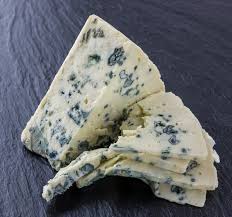
Gorgonzola is a type of blue cheese, but it’s special because of the small ‘blue’ stripes that have in it. It’s a mild, sweet, and milky cheese that is best served with a glass of red wine.
Roquefort
Roquefort is, together with Gorgonzola, one of the world’s best-known blue cheeses. This French moldy cheese is like a moist, crumbly paste. It’s made from sheep’s milk and has a sharp, sweet, and nutty flavor that comes from the yeast.
Ricotta

Ricotta is an Italian whey cheese made from sheep’s milk. This smooth cheese with a creamy mild sweet and fresh taste and a thick texture is very versatile. Plus, it’s low in fat, which makes it a good choice for almost any diet.
Cottage cheese
Ricotta and cottage cheese are often compared and some people replace one with the other. But they aren’t all that similar. Cheesemakers separate milk or cream into curds and whey. Then, the curds are used to make cottage cheese and the whey is used to make ricotta. That’s the reason why both kinds of cheese – Ricotta and cottage cheese – have different textures. But they’re both soft and mild in flavor. While Ricotta is described as sweet, cottage cheese is fresh, milky, and creamy, with a moderate saltiness to it. The texture of cottage cheese is chunky, from the curds.
Mascarpone
Compared to Ricotta (which is smooth, but has a grainy texture), mascarpone has a very smooth texture with no lumps or granularities. Mascarpone is one of the most popular cheeses and is made from cream and citric or tartaric acid, which thickens the cream. It has a milky and slightly sweet taste and a buttery flavor which comes from its high butterfat content.
Halloumi

Halloumi is a Cypriot semi-hard brined cheese made from a mixture of goat’s and sheep’s milk, and sometimes also cow’s milk. It’s the best cheese for grilling because it has a high melting point.


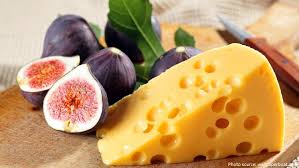
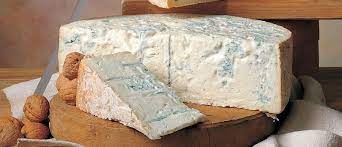

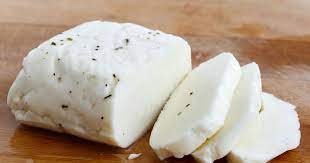


Discover your favorite wine grape variety/cultivar
Discover the most popular wine grape varieties in our chosen 7 wine and cheese countries and pick your favorite variety and wine from the list below
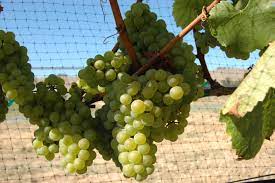
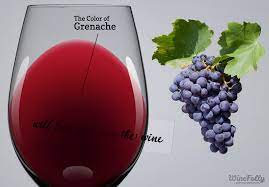
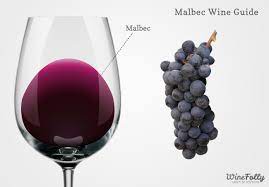
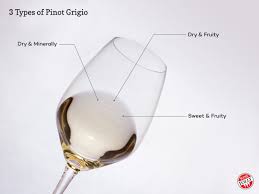
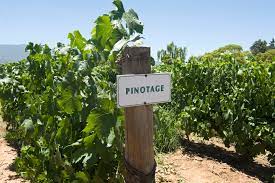

Cabernet Franc
One of the major black grape varieties worldwide, Cabernet Franc is principally grown for blending with Cabernet Sauvignon and Merlot to produce Bordeaux. Lighter than Cabernet Sauvignon, it is a bright, pale red wine that adds a peppery perfume to more robust blends, as well as notes of tobacco, raspberry, bell pepper, cassis, and violets.
A chance crossing between Cabernet Franc and Sauvignon Blanc in 17th century southwest France, Cabernet Sauvignon is now the most widely planted wine grape variety in the world. It produces wines with blackcurrant, green bell pepper notes, mint, and cedar notes in cooler climates. Wine from moderate climates sees blackcurrant, black cherry, and black olive notes, while the current flavors can become ‘jammy’ in very hot climates.
Carménère
A member of the Cabernet family, Chile produces the majority of Carménère wines available today. Considered part of the original six red grapes of Bordeaux, as the Chilean wine industry grows, more experimentation is being carried out on Carménère’s potential as a blending grape, especially with Cabernet Sauvignon.
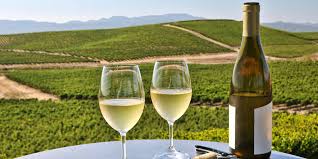
A green-skinned grape variety used in the production of white wine, Chardonnay is an essential component of many sparkling wines worldwide, including Champagne. The grape itself is very neutral, with its flavors influenced by oak and terroir (the landscape and geology in which it is grown). Cool climates produce a medium to light body with green plum, apple, and pear flavors. Warmer places create more citrus, peach, and melon tastes, while warm regions bring out fig and tropical fruit notes.
Gewürztraminer
Gewürztraminer is an aromatic white wine grape variety with pink-to-red skin color. It grows best in cooler climates, producing wines that are usually off-dry with a bouquet of lychees. It pairs well with cheese and fleshy, fatty wild game.
Grenache
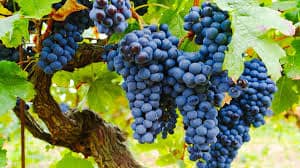
One of the most widely planted red wine grape varieties, Grenache thrives in Spain’s hot, dry conditions, Sardinia, the south of France, Australia, and California’s San Joaquin Valley. It produces wine with relatively high alcohol content and flavors of raspberry and strawberry with a subtle, white pepper spice note.
Malbec
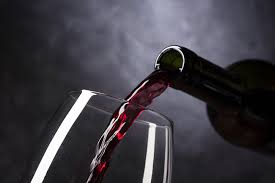
Primarily a red wine grape variety is grown in South West France, Malbec is increasingly known as an Argentine varietal wine and is grown around the world. It ripens mid-season and can bring deep color, ample tannin, and a plum-like flavor to claret blends.
Merlot
The name Merlot is thought to come from merle, the French name for the blackbird. Made across the globe, there are two main styles of Merlot wine. The late-harvested ‘International style’ produces full-bodied, high-alcohol, inky purple wines with intense plum and blackberry fruit. The traditional ‘Bordeaux style’ of Merlot involves earlier harvesting to maintain acidity and produces more medium-bodied wines with moderate alcohol levels, red fruit flavors, and a vegetal note.
Muscat Ottonel
A white wine grape variety commonly used in dessert wines from Austria, Bulgaria, Romania, Croatia, and Serbia as well as dry wines from Alsace and Hungary. First cultivated in Alsace by the Loire grower Moreau-Robert in 1852, Muscat Ottonel is believed to be a cross of Chasselas with Muscat de Saumur.
Nebbiolo
An Italian red wine grape variety thought to derive its name from the Italian word nebbia, which means ‘fog’, Nebbiolo produces lightly-colored red wines which can be highly tannic with scents of tar and roses. Mature wines develop aromas and flavors, including violets, tar, wild herbs, cherries, raspberries, truffles, tobacco, and prunes. Nebbiolo wines can require years of aging to balance the tannins with other characteristics.
Pinotage
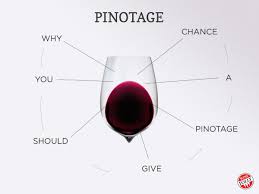
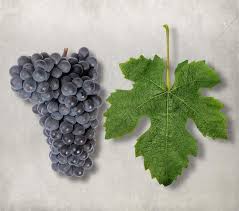
South Africa’s signature red wine grape variety, Pinotage, was bred there in 1925 as a cross between Pinot Noir and Cinsaut (known as ‘Hermitage’ in South Africa at that time, hence the name). It typically produces deep red varietal wines with smoky, bramble, and earthy flavors, sometimes with banana and tropical fruit notes. Pinotage is often blended, made into fortified wine and even red sparkling wine.
Pinot Grigio / Pinot Gris
Also called Grauburgunder, this white wine grape variety with a grey-blue fruit is thought to be a mutant clone of the Pinot Noir variety. Grown around the world, the wine’s flavors range from ripe tropical fruit notes of melon and mango to some botrytis-influenced flavors (also known as ‘Noble Rot’, Botrytis is a fungus that dries out the grapes, thus concentrating the sugar and flavors.
Pinot Noir
Pinot Noir grapes are grown worldwide in cooler climates, particularly in the Burgundy region of France. Pinot Noir is also used to make the Italian wine Franciacorta, despite being challenging to cultivate and transform into wine. When young, wines made from pinot noir tend to have red fruit aromas of cherries, raspberries, and strawberries. As the wine ages, pinot can develop more vegetal and ‘barnyard’ aromas that can contribute to its complexity.
Riesling
A white grape variety originating from the Rhine region of Germany, Riesling is an aromatic grape variety displaying flowery aromas and high acidity. It is used to make dry, semi-sweet, sweet, and sparkling white wines that are usually varietally pure and seldom oaked.
Sauvignon Blanc
Sauvignon Blanc is a green-skinned grape variety planted in many of the world’s wine regions, producing a crisp, dry, and refreshing white varietal wine. The grape is also a component of the famous dessert wines from Sauternes and Barsac. Depending on the climate, the flavor can range from aggressively grassy to sweetly tropical. When slightly chilled, it pairs well with fish or cheese – mainly chèvre – and is also known as one of the few wines that go well with sushi.
Sémillon
Sémillon is a golden-skinned grape native to the Bordeaux region, used to make dry and sweet white wines, mainly in France and Australia. It is also key to the production of sweet wines such as Sauternes. For the grapes to be used for sweet wine production, they need to have been affected by Botrytis.
Shiraz / Syrah
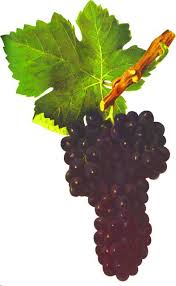
Syrah, also known as Shiraz, is a dark-skinned grape variety grown throughout the world, primarily to produce red wine. Moderate climates (such as the northern Rhone Valley and parts of Washington State) tend to make medium to full-bodied wines with medium-plus to high levels of tannins and notes of blackberry, mint, and black pepper. Syrah from hot climates such as Crete and the Barossa Valley and McLaren Vale regions of Australia are more consistently full-bodied with softer tannin, jammier fruit, and spice notes of licorice, anise, and earthy leather.
Tempranillo
Tempranillo is an early ripening black grape variety that thrives in chalky vineyard soils such as those of the Ribera del Duero region of Spain. Its relatively neutral profile sees it often blended with other varieties such as Grenache and Carignan (known in Rioja as Mazuelo) or aged for extended periods in oak where the wine quickly takes on the flavor of the barrel. In Portugal, where the grape is known as Tinto Roriz and Aragonez, it is blended with others to produce Port wine.
Viognier
Like Chardonnay, this white wine grape variety can produce full-bodied wines with a lush, soft character. In contrast to Chardonnay, the Viognier varietal has more natural aromatics that include notes of peach, pears, violets, and minerality.
Zinfandel
Zinfandel (also known as Primitivo) is a variety of black-skinned wine grape grown in over 10 percent of California vineyards. The grapes typically produce a robust red wine, and in the United States, a semi-sweet rosé wine called White Zinfandel has six times as many sales as the red wine. The taste of the red wine depends on the ripeness of the grapes: red berry fruit flavors predominate in wines from cooler areas, whereas blackberry, anise, and pepper notes are more common in wines made in warmer areas and wines made from the earlier-ripening Primitivo clone.
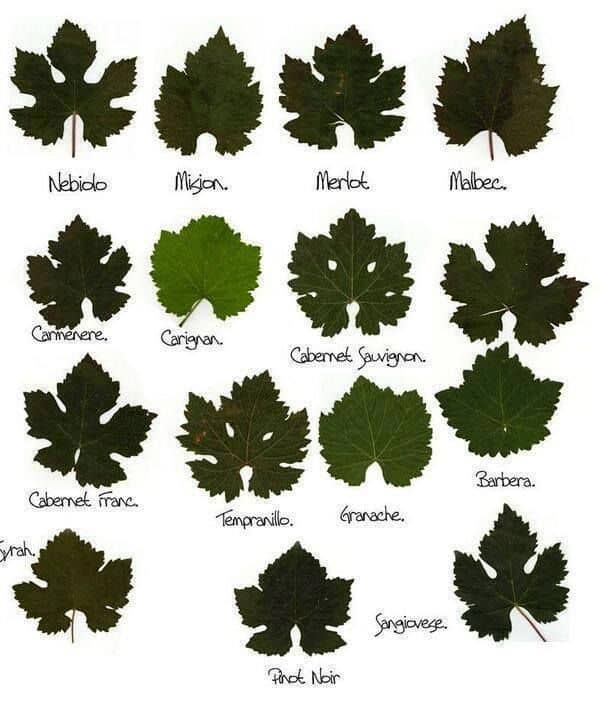
Wines and cheese from the Napa Valley, California
Napa Valley Wines:
Up from San Francisco, California wine country is home to tens of thousands of acres of vineyards (growing more Chardonnay grapes than anywhere else in the world) and, over 250 wineries. The oldest winery, Sinoma’s Bueno Vista, opened in 1857, while others are less than a decade old. Displaying a marvelous mix of architecture (Bordeaux-inspired chateaux, rustic ranches, and innovative, industrial-style setups,) they craft a mouth-watering range of wines—from the region’s signature smoky Cabernet Sauvignon to spritz rosé wines.
Napa Valley Cheese
Wine steals the show in this neck of the woods, but cheese plays a spectacular supporting role. With thirty farms and creameries in the Sonoma valley alone and many more in the wider region, there’s a cheese for every palate. Cow, goat, sheep, even water buffalo milk make a smorgasbord featuring creamy ricotta, sharp cheddar, silky mozzarella, and crumbling stilton to name a few. Cheese lovers can attend tastings (the best include local wines, olives, and meats), tours, and even cheesemaking classes.
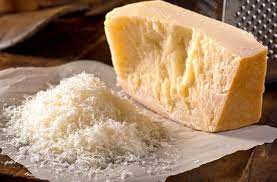
Napa Valley
Historic Napa is a must-see, flanked by the Mayacamas mountain range to the west, and the Vacas peaks to the east. The town of Healdsburg, the other side of the mountains, is foodie heaven. In the wider countryside, you can take hot air balloon rides, drive winding lanes, set off for riverside bike rides, and watch the west coast sunset over rolling meadows.
Wines and cheese from Barossa Valley, South Australia
Barossa zone is a wine zone located in central South Australia west of the Murray River and which occupies the Barossa Valley, the Eden Valley, and some adjoining land. The zone which is enclosed by the Mount Lofty Ranges zone on three sides and by the Lower Murray zone to its east contains two wine regions that have received appellation as Australian Geographical Indications (AGI). These are the Barossa Valley and Eden Valley regions.
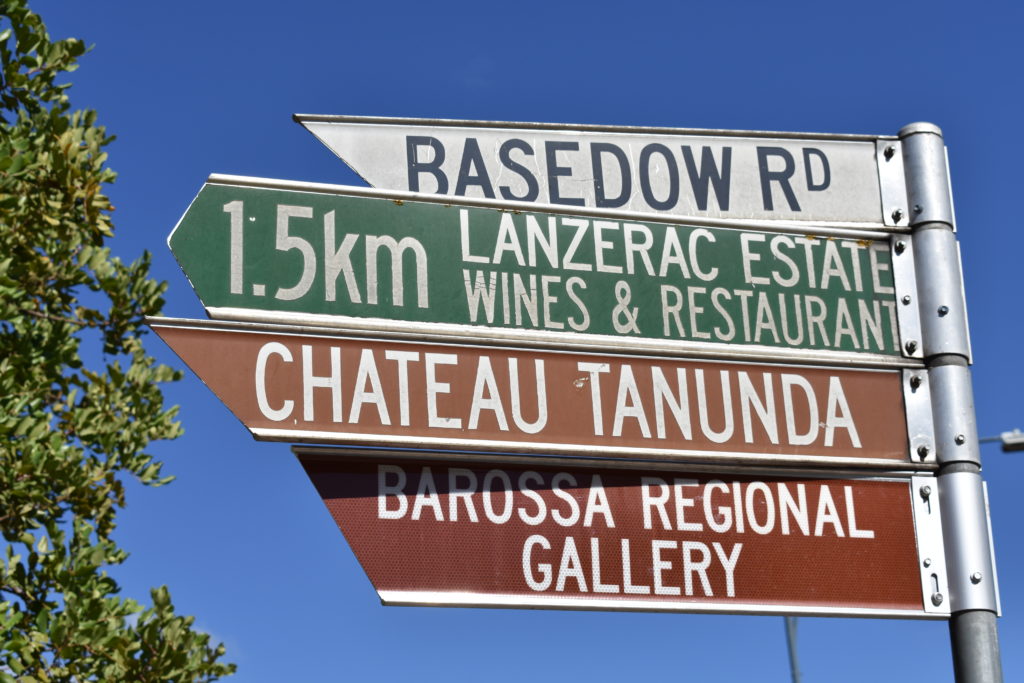
The wine industry plays a major role in the Barossa, being the main source of employment for many residents. The many hectares of vineyards are the most distinctive feature of the area, especially when viewed from the Mengler Hill lookout, which is positioned on the Barossa Range which forms much of the eastern side of the valley. The success of the wine industry has historically been celebrated every two years with a week-long Barossa Valley Vintage Festival. The festival draws visitors from all over the world and has entertainment for all tastes including a huge street parade, concerts, and gourmet dining.
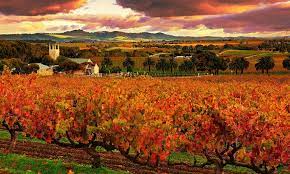
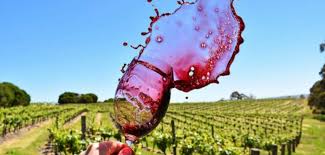
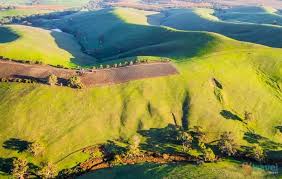
The Barossa Valley is primarily known for its red wine, in particular Shiraz. Normally, large proportions of Barossa Shiraz are used in Penfolds Grange, Australia’s most famous wine. Other main grape varieties grown in the region include Riesling; Semillon; Grenache and Cabernet Sauvignon. Fortified wines have been traditionally produced in the region as well.
The Barossa Valley is a rich source of some of the oldest Shiraz vines in the world. Shiraz vines planted as early as 1847 by Johann Frederick August Fiedler on Lot 1, Hundred of Moorooroo (the township of Tanunda) are still in commercial production today by Turkey Flat Vineyards.
BAROSSA VALLEY CHEESE
Renowned as a wine-producing region, the Barossa Valley is also home to an incredible array of world-class dairy producers and experiences. Wander through the Barossa Valley Market, or pop into an ice creamery or cheese cellar door to taste the best of the Barossa dairy region.
Visit the Barossa Valley Cheese Cellar to enjoy luxurious artisan cheese, hand-made on site. The Cheese Cellar offers the full range of Barossa Valley Cheese Company cheese products, as well as local gourmet condiments and a wide variety of cheese accompaniments. Tasting plates and experiences are available, as are delicious cheese platters and sit-down experience plates that match cheese to seasonal produce, wine, beer, and even tea! Whilst you’re tucking into artisan cheese, you can also watch a live stream that takes you behind the scenes of the cheese-making process onsite in the adjoining production facilitates. The 3 best-known kinds of cheese from South Australia must surely be:
Allium Piper
Allium Piper is an Australian cheese hailing from Woodside. The cheese is made from a blend of Woodside Chevre (made from goat’s milk) and Allisford Farm’s organic hand-harvested garlic. The curd is drained for a few hours, then mixed with salt, crushed garlic, and black pepper. The combination is drained for 10 days before consumption. The texture is soft and creamy, the aromas spicy, fresh, and garlicky, and the flavors are spicy and garlicky. Allium Piper is often used on cheeseboards, and it’s recommended to serve it with lots of crusty bread.
Goat on a Hot Tin Roof
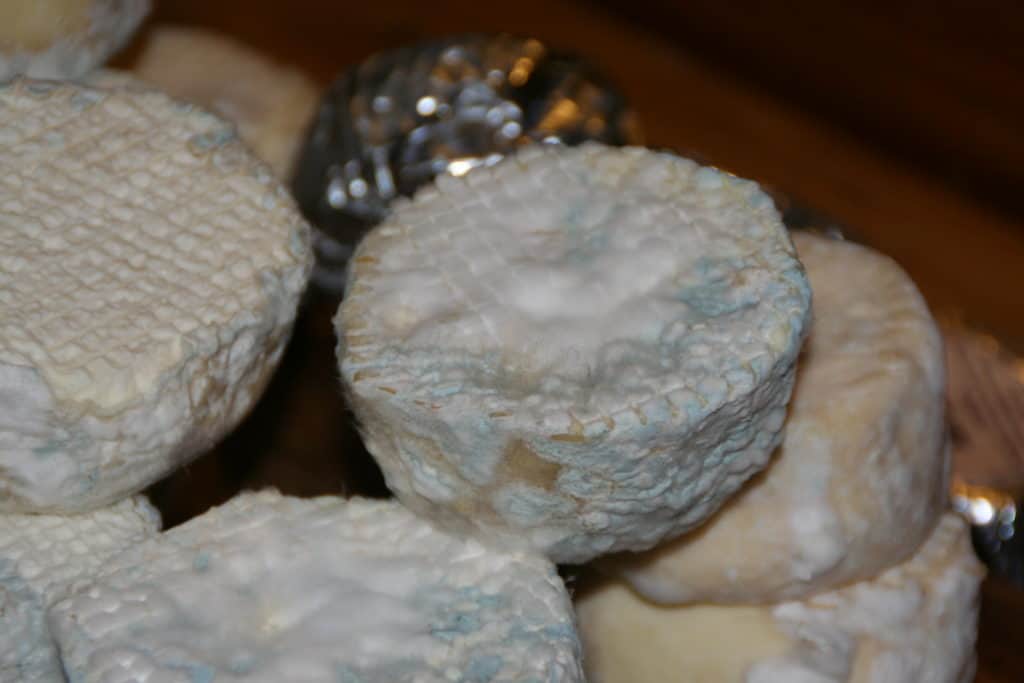
Goat on a Hot Tin Roof is a South Australian cheese made from pasteurized goat’s milk coming from Oskjberg and Towerview dairies. This rindless cheese has a soft and creamy texture, while the flavors are spicy and herbal because it is infused with a combination of pepper berry, Tanami apples, chili, and saltbush. It is recommended to pair it with a drizzle of high-quality olive oil and warm crusty bread.
Mandolin
Mandolin is an Australian semi-hard cheese made from pasteurized cow’s milk. The cheese is smear-ripened and wrapped in vine until it develops a typical rusty-red visual appearance. Its texture is supple, soft, and crumbly, while the flavors are best described as herbal and grassy.
Cheese and wine from the Cape Winelands in South Africa
Cheese and wine from the Cape Winelands, South Africa
The Western Cape is home to the vast majority of the South African wine industry, and the country’s two most famous wine regions, Stellenbosch and Paarl. The city of Cape Town serves as the epicenter of the Cape Winelands, a mountainous, biologically diverse area in the south-western corner of the African continent.

A wide variety of wines are produced here. Wines from the Shiraz and Pinotage grape varieties can be fresh and juicy or full-bodied and gutsy. The Western Cape’s elegant, age-worthy Cabernet Sauvignon wines and Bordeaux Blends were at the vanguard as exports recommenced in the mid-1990s, while Burgundy-style Pinot Noir and Chardonnay from Walker Bay are gaining global acclaim, and cool-climate style Sauvignon Blanc from Darling and Overberg is rivaling that made in any other New World country.
The climate can be cool and rainy (as in Cape Point and Walker Bay) but is more often than not the Mediterranean in nature.
The Western Cape is littered with spectacular mountain ranges that form the Cape Fold belt. These are extremely important for viticulture across the whole region, contributing soils and microclimates ideal for the production of premium wines.
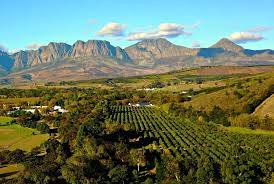
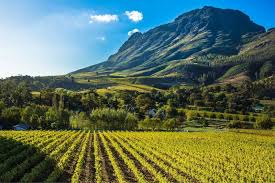

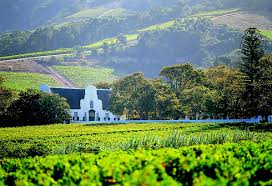
The surrounding oceans play a big part in the climate of the Western Cape. The area between Cape Point and Cape Agulhas is where the Antarctic Benguela Current of the Atlantic meets the warmer Agulhas Current of the Indian Ocean. The prevailing winds that blow in from the south-east – collectively known as the ‘Cape Doctor’ – are cooled by these currents, bringing refreshment to vineyards across the Cape. Westerly winds that affect the more-northern areas of the Cape are also cooled by the Benguela Current, which runs up the west coast of South Africa.
The first vineyards were planted in the Western Cape when South Africa’s very first European settlers arrived in the 17th Century. The second Governor of the Cape, Simon van der Stel, is widely credited with bringing winemaking to the region in the 1600s and setting up a wine estate in Constantia. The Stellenbosch region is named after him. However, the wine industry in the wider Western Cape owes more to the Huguenots, Protestants who fled religious persecution in Catholic France in the late 17th Century and arrived in South Africa with vines from their homeland.
With many of its wineries and vineyards within a few hour’s drive from Cape Town, and given the many other options for tourists, the Western Cape offers numerous sub-regional wine routes and opportunities for wine tasting.
Cheese in the Winelands
The ancient art of cheesemaking predates recorded history. Legend has it that it was introduced to ancient Greece before the wine was, by the Greek god Aristaios. Speaking of wine, our preferred pairing is a crisp sauvignon blanc but, depending on the strength of the cheese, a rosy pinot noir or purply-red cabernet sauvignon could work just as well. In addition to the numerous well-established cheeseries dotted around the country, we’ve selected some boutique and artisanal cheeses
FAIRVIEW BLUE ROCK

Taste A firm, full-flavored, Roquefort-style blue-veined cheese with a creamy texture and sharp bite, produced by the mold interacting with the fats to create that traditional “blue cheese” flavor.
KLEIN RIVER GRUYÈRE
Taste Slightly grainy texture with a strong tangy taste and a wonderful complexity of flavors – fruity at first, with earthy, nutty characteristics that linger afterward.
GANZVLEI CHEDDAR
Taste A slightly grainy, very strong Cheddar with a lingering bite
LANGBAKEN KAROO CRUMBLE
Taste A mature hard cheese with a dry crumbly texture, tangy bite, and a slightly fruity aftertaste.
VAN GAALEN BOERENKAAS

Taste This two-month matured Gouda-style cheese is soft, sweeter than Cheddar, and made from cow’s milk.
Wines and cheese from Tuscany, Italy
Tuscan wine (Italian Toscana) is Italian wine from the Tuscany region. Located in central Italy along the Tyrrhenian coast, Tuscany is home to some of the world’s most notable wine regions. Chianti, Brunello di Montalcino and Vino Nobile di Montepulciano are primarily made with Sangiovese grape whereas the Vernaccia grape is the basis of the white Vernaccia di San Gimignano. Tuscany is also known for the dessert wine Vin Santo, made from a variety of the region’s grapes. Tuscany has forty-one Denominazioni di origine controllata (DOC) and eleven Denominazioni di Origine Controllata e Garantita (DOCG). In the 1970s a new class of wines known in the trade as “Super Tuscans” emerged.

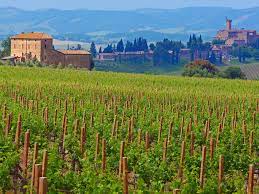
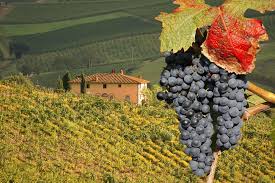
After Piedmont and the Veneto, Tuscany produces the third-highest volume of DOC/G quality wines. Tuscany is Italy’s third most planted region (behind Sicily and Apulia) but it is eighth in production volume. This is partly because the soil of Tuscany is very poor, and producers emphasize low yields and higher quality levels in their wine. More than 80% of the regions’ production is in red wine.
The Sangiovese grape is Tuscany’s most prominent grape; however, many different clonal varieties exist, as many towns have their local version of Sangiovese. Cabernet Sauvignon has been planted in Tuscany for over 250 years but has only recently become associated with the region due to the rise of the Super Tuscans. Other international varieties found in Tuscany include Cabernet Franc, Chardonnay, Merlot, Pinot noir, Sauvignon blanc, and Syrah. Of the many local red grape varieties Canaiolo, Colorino, Malvasia Nera, and Mammolo are the most widely planted. For Tuscan white wines, Trebbiano is the most widely planted variety followed by Malvasia, Vermentino, and Vernaccia.
Tignanello is one of the early Super Tuscans.
In addition to wines based on the Sangiovese grape, many well-known Super Tuscans are based on a “Bordeaux-blend”, meaning a combination of grapes typical for Bordeaux (esp. Cabernet Sauvignon and Merlot). These grapes are not originally from the region but imported and planted later. The climate in Tuscany has proven to be very good for these grapes.
Vin Santo
While Tuscany is not the only Italian region to make the passito dessert wine Vin Santo (meaning “holy wine”), the Tuscan versions of the wine are well regarded and sought for by wine consumers. The best-known version is from the Chianti Classico and is produced with a blend of Trebbiano and Malvasia Bianca
Cheeses from Tuscany
Italy is the country with the highest variety of cheeses in the world, with over 2500 traditional varieties, among which are about 500 commercially recognized cheeses and more than 300 kinds of cheese with protected designation of origin. Fifty-two of them are protected at a European level. In terms of raw production volume, Italy is the third-largest cheese producer in the European Union, behind France and Germany. Lombardy is the first Italian region for several protected kinds of cheese, with 77 varieties including Granone Lodigiano, ancestor of all Italian granular cheeses such as Grana Padano and Parmigiano-Reggiano, Mascarpone, and the well-known Gorgonzola blue cheese. Italian cheeses Mozzarella and Ricotta are some of the most popular cheeses worldwide.

Pliny the Elder, in his major encyclopædic work Naturalis Historia, describes several stages in the production of pecorino Toscano, which he names as Lunense, apparently after the territory of Lunigiana. Other early names of the cheese include “marzolino”, after March in which production traditionally began.
Today, this style of pecorino is widely produced across Tuscany and also in several nearer districts of Umbria and Lazio.
Cheese and wines from Macedonia, Greece
Greece is one of the oldest wine-producing regions in the world and among the first wine-producing territories in Europe. The earliest evidence of Greek wine has been dated to 6,500 years ago when wine was produced on a household or communal basis. In ancient times, as trade in wine became extensive, it was transported from end to end of the Mediterranean; Greek wine had especially high prestige in Italy under the Roman Empire. In the medieval period, wines exported from Crete, Macedonia, and other Greek ports fetched high prices in northern Europe.
Ancient Greeks considered wine as an integral part of their lives. Dionysus was the god of wine and feasts were organized in his honor. They had conjured many myths associated with wine. The enormous economic importance of wine in ancient times led to legislative protection. In the museum of Thassos, there is a law engraved in marble dating back to the 5th century BC, which is considered to be the first wine law and it regulated issues concerning harvest and sales. The earliest written evidence for transporting wine by sea is given by Homer in the Iliad. Ancient Greeks -as wine lovers- used a wide variety of vessels associated with the use and transfer of wine, such as amphoras, craters, cups, kantharous, etc.
The soil, the climate, the variety, and man are the four main determinants of the quality of the wine. The vineyard is very essential for the wine that will be produced.
The issue of finding the ideal spot for each variety concerns the vine-growers from past years. The climate defines as a first estimate of the planting.
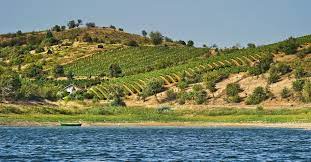

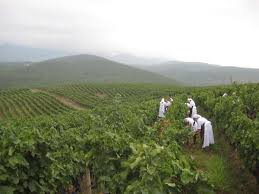
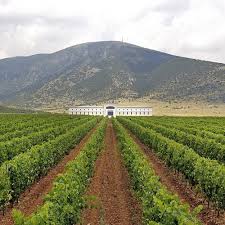
The Greek vineyard is characteristic of a large number of micro-regions with a particular ecosystem (soil – climate – grape variety). Also rare are the single vineyards in Greece: usually, they are scattered and disrupted by other cultures. The smooth Mediterranean climate of Greece with soft winters and sunny summers varies according to the influence of the nearby mountains or the nearby sea and gives a unique microclimate character to the vineyards.
Macedonian vines are known for their hardiness and ability to survive harsh droughts. The grapes can produce high must weights that translate into noticeable alcohol levels. They are generally late ripening with phenols that will produce enhanced herbaceous tones if the grapes are not harvested early. Today it is often blended with Cabernet Sauvignon in Meritage-style wines. Other grape varieties that may be blended with Limnio include Cabernet Franc, Cinsaut, Grenache, Petite Sirah, Merlot, Aghiorgitiko, and Xinomavro.
Greek Cheese
Greece’s dairy production dates back to ancient times and features a wide variety of cheese. Although most consumers know Feta the flagship cheese of Greece, they are less likely to be familiar with other Greek cheeses.
While traditionally Greece has produced goat and sheep’s milk cheeses, in recent years cow’s milk is also being incorporated into some Greek cheeses. Greece has many Protected Designation of Origin (PDO) cheeses. This designation is designed to protect regional foods and was initiated in 1992 by the European Union.
KEFALOTYRI
This traditional, yellow, hard cheese is made from sheep milk, goat milk, or a blend of two. Kefalotyri is made in many regions of the country which leads to many different techniques, milk, and ingredients resulting in an incredible variety of features and quality. There is not a typical Kefalotyri as such. It pairs wonderfully with both red and white wines.

LADOTYRI MYTILINI
Meaning the “oil cheese,” this hard pale-yellow cheese is made from whole, usually pasteurized, sheep’s milk, to which up to 30% goat’s milk can be added. The milk comes exclusively from animals raised on the island of Lesbos, where the production and maturation facilities must be located as well.
The special taste of the Ladotyri Mytilinis is due to two factors. The delicate and gentle taste of the local oil, which does not diminish the aromas of the cheese, and the texture of the cheese itself, is hard enough to limit the absorption of oil. It has a spicy and salty taste, and it pairs well with sweet wines.
GRAVIERA
Graviera is said to be the second most popular cheese in Greece. It is produced in various regions with corresponding distinguishing features. Naxos Graviera is made with 80% cow’s milk, to which sheep, goat, or a mixture thereof (up to a maximum of 20%) can be added and it matures for three months. Cretan Graviera however is made from sheep milk with the addition of 20% goat cheese if desired. This Graviera is also aged for a minimum of three months.
Wines and cheese from Burgundy, France
Burgundy wine is made in the Burgundy region of eastern France, in the valleys and slopes west of the Saône, a tributary of the Rhône. The most famous wines produced here—those commonly referred to as “Burgundies”—are dry red wines made from pinot noir grapes and white wines made from chardonnay grapes.
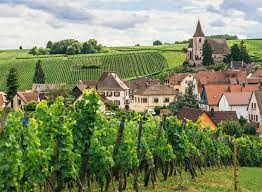
Burgundy is in some ways the most terroir-oriented region in France; immense attention is paid to the area of origin, and in which of the region’s 400 types of soil a wine’s grapes are grown. As opposed to Bordeaux, where classifications are producer-driven and awarded to individual chateaux, Burgundy classifications are geographically-focused. A specific vineyard or region will bear a given classification, regardless of the wine’s producer. This focus is reflected on the wine’s labels, where appellations are most prominent and producers’ names often appear at the bottom in much smaller text.
The main levels in the Burgundy classifications, in descending order of quality, are Grand crus, Premier crus, village appellations, and finally regional appellations:
Red and white wines are also made from other grape varieties, such as Gamay and aligoté, respectively. Small amounts of rosé and sparkling wines are also produced in the region. Chardonnay-dominated Chablis and Gamay-dominated Beaujolais are recognized as part of the Burgundy wine region, but wines from those subregions are usually referred to by their names rather than as “Burgundy wines”.
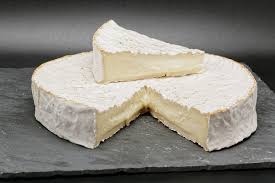
Cheese from Burgundy
As the world’s second-largest wine producer, France is home to several prestigious wine regions. Yet, there is one region renowned above the rest. Burgundy produces some of the world’s most acclaimed wines, setting the international gold standard for Pinot Noir and Chardonnay. Accordingly, this region also makes a bounty of local French cheeses, which pair exquisitely with Burgundian wines and more.
Époisses
Époisses is the quintessential cheese of Burgundy named for the village where it’s been made for over five centuries. When World War I began in 1914, Époisses production began to decline. Thankfully, local farmers with the expertise passed on from previous generations revived this delectable tradition. This is a cow’s milk cheese with a unique production process that imparts its signature flavor. While aging, the cheese is hand washed three times a week with a mixture of water and marc de Bourgogne, Burgundy’s version of brandy. The final cheese has a bloomy, soft orange rind with a creamy center. Though Époisses’ aromas are pungent, its flavors are mild, tangy, and nutty with hints of hay. This French cheese is best served at room temperature, becoming creamy enough to spoon onto a baguette.
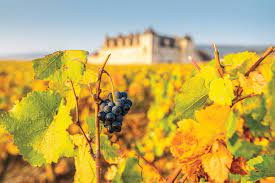
Brillat-Savarin
For a decadent taste of Burgundy, look no further than Brillat-Savarin. This triple cream cow’s milk cheese boasts a 75% fat content offering a lusciously rich texture. In 1930, cheesemaker Henri Androuët created Brillat-Savarin in Normandy. However, this delicacy is also made in Burgundy today. Andreouët named the cheese in honor of the legendary gourmet Jean-Anthelme Brillat-Savarin. Brillat-Savarin’s interior is dense yet soft and creamy with the same color as butter. The rich texture is due to the heavy cream added to the whole milk during the production process. Expect delicate earthy flavors with a touch of grass, hay, and butter.
Abbaye de Citeaux
Cistercian monks have inhabited the Abbey of Citeaux since 1098. Beyond a history of bookbinding and winemaking, the Abbey makes a sought-after pressed cow’s milk cheese. In 1925, the Abbey began producing this washed-rind cheese in their creamery. The milk comes from cows who graze on the grasses surrounding the Abbey. Due to the washed-rind process, Abbaye de Citeaux is quite intense. However, the flavors are much more mild and earthy, while the texture is dense and malleable. If you want to try Abbaye de Citeaux, you’ll have to come to Burgundy. Only 300 are produced every week, and most are sold directly from the Abbey.
Wines and cheese from the Douro Valley, Portugal
Douro is a Portuguese wine region centered on the Douro River in the Trás-os-Montes e Alto Douro region. It is sometimes referred to as the Alto Douro (upper Douro), as it is located some distance upstream from Porto, sheltered by mountain ranges from coastal influence.
There is archaeological evidence for winemaking in the region dating from the end of the Western Roman Empire, during the 3rd and 4th centuries AD, although grape seeds have also been found at older archaeological sites. In Medieval times from the mid-12th century, Cistercians had an important influence on winemaking in the region, through their three monasteries Salzedas, São João de Tarouca, and São Pedro das Águias.
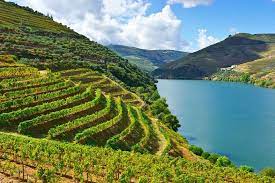
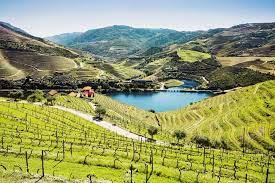



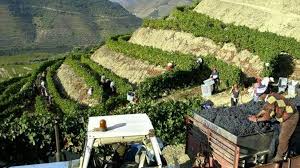

A large number of grape varieties are grown in the Douro region, most of them local Portuguese grapes. For a long time, the grape varieties grown in the Douro were not very well studied. Vineyards of the mixed plantation were the norm, and most of the time, the vineyard owners didn’t know which grape varieties they were growing. A pioneering effort was made in the 1970s which identified Touriga Nacional, Tinta Roriz, Touriga Franca, Tinta Cão, and Tinta Barroca as the prime dark-skinned grape varieties. Tinta Amarela and the teinturier Sousão have later come to be included among the varieties that attract the most interest. This work was important for creating the new wave of top Douro wines and has also led to a greater focus on the grape varieties that go into Port wine. Most top Quintas now replant with single-variety vineyards and focus on a limited number of varieties, but older, mixed vineyards will remain in production for many decades to come.
Portuguese Cheese
Serra da Estrela
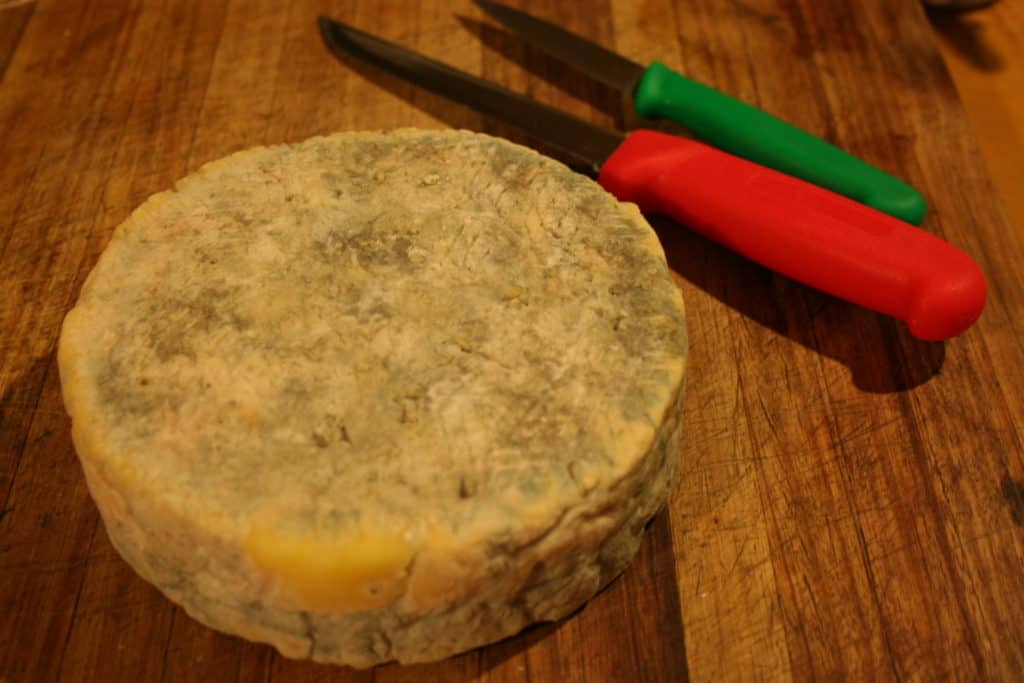
This cheese from Portugal is famous for its pungent aroma. With a very strong smell (definitely not for everyone) and a buttery texture, Serra da Estrela sheep’s cheese is perfect for spreading on toast and is widely known as the “King” of Portuguese cheeses.
This particular cheese is so creamy that it is unthinkable to cut it with a knife. Instead, a circular shape is cut from the top of the cheese, and its melted center is enjoyed in spoonfuls or by dipping your favorite crusty bread inside.
Transmontano Goat’s Cheese
In the northwest of Portugal, we recommend trying Transmontano goat’s cheese PDO, a very hard, cured, salted cheese which is prepared with goat’s milk. Despite its deep yellow color, you will also often find red transmontane cheeses, painted with chili to intensify their flavor.
Typical of the Trás-os-Montes region, this delicacy can also be tasted all over the country. Where can you buy this Portuguese cheese? Almost everywhere, as there are both local shops, delicatessens, and even supermarkets) that sell this Portuguese cheese.
Rabaçal Cheese
Rabaçal cheese is another one of Portugal’s most famous cheeses, produced in a village near Coimbra, Rabaçal. This white cheese is a hard, mature cheese and is hand-produced from a mixture of sheep’s milk and goat’s milk. If you try it, look out for its characteristic taste due to the “Santa Maria” grass, a variety of natural thyme that is abundant in the local area and is used to feed the sheep and goats that supply the milk for the production of this cheese.
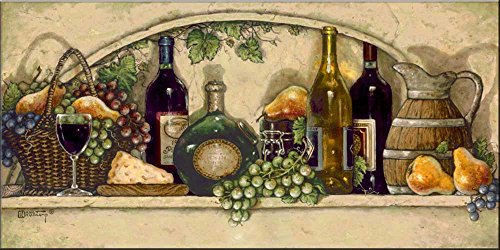

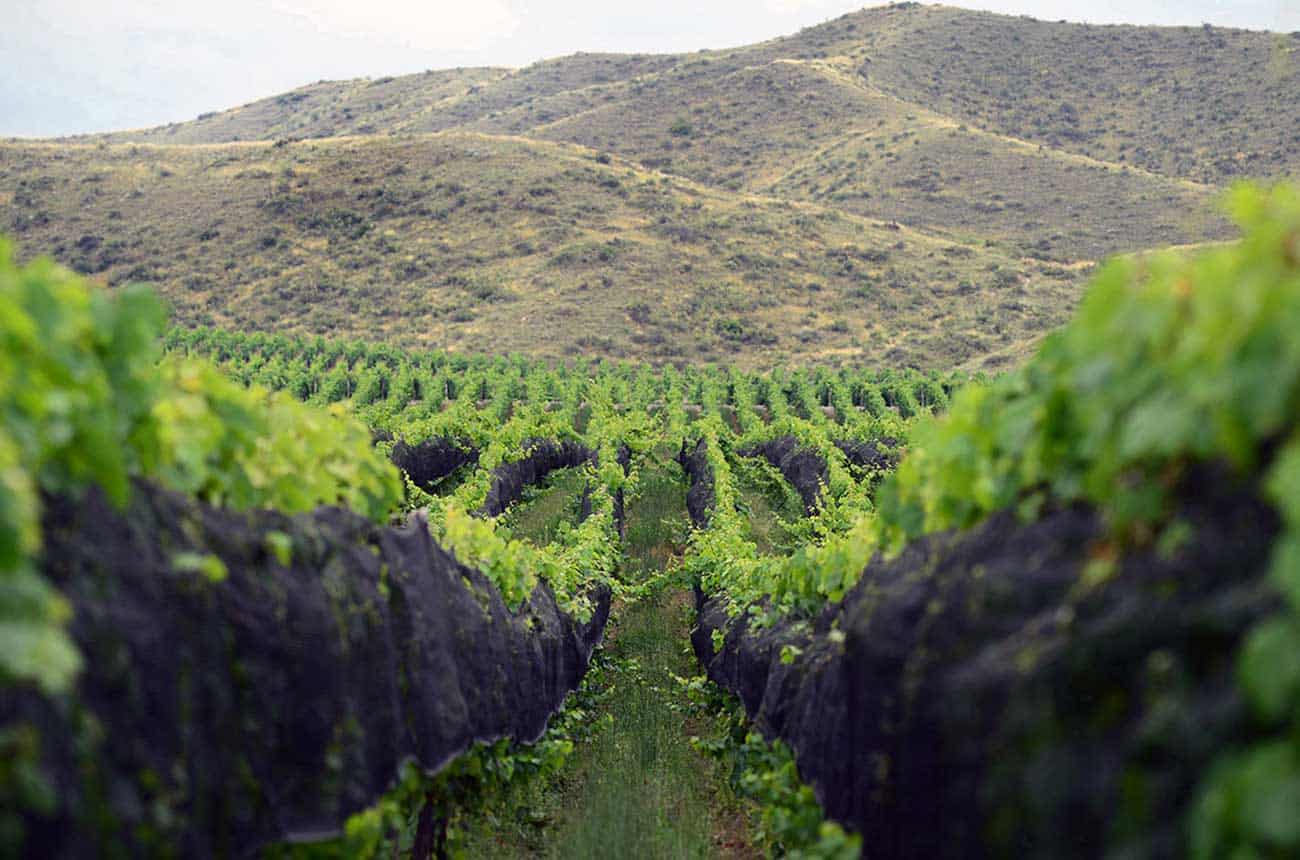
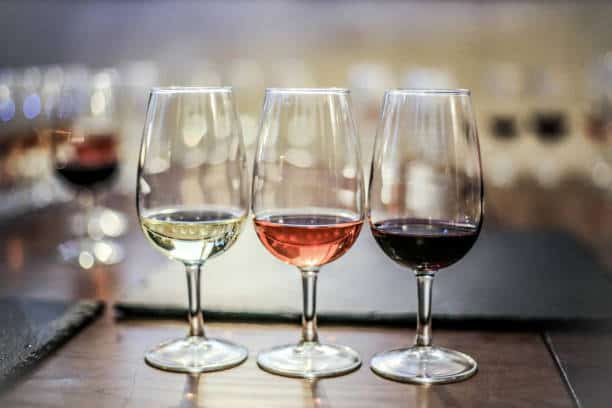



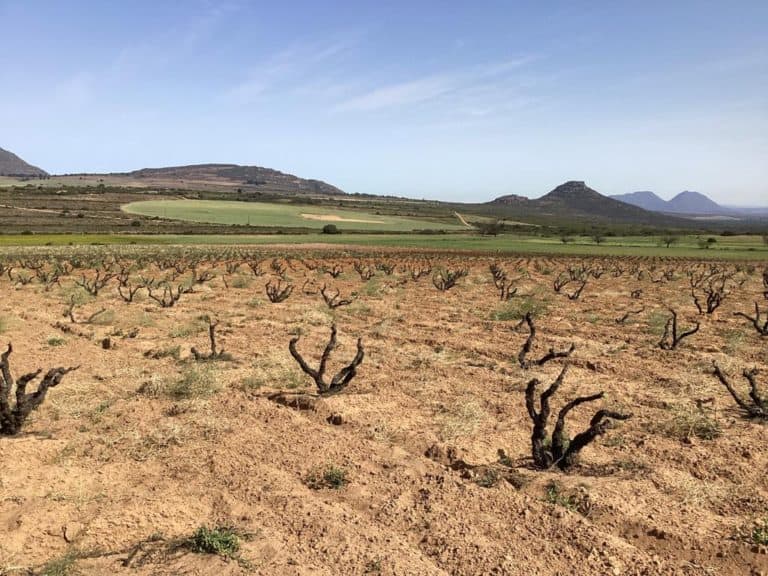
11 Comments
Comments are closed.